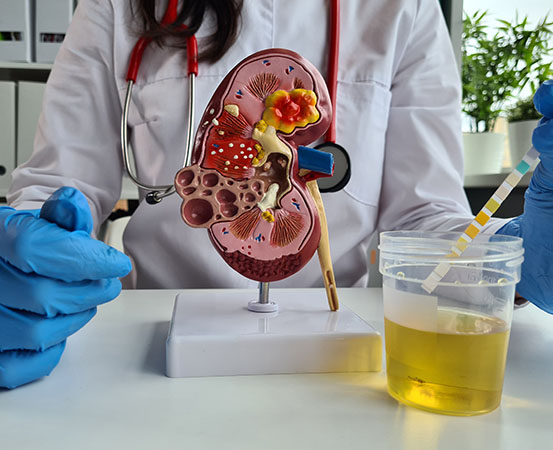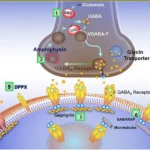Diagnostic test for glycosuria is the presence of glucose in the urine, typically occurring when blood glucose levels exceed the renal threshold for glucose reabsorption. While it is often associated with diabetes mellitus, its presence in individuals with severe insulin resistance requires further investigation. Insulin resistance occurs when cells fail to respond adequately to insulin, leading to chronic hyperglycemia despite high insulin levels. Identifying the underlying cause is essential for effective management and the prevention of complications such as metabolic syndrome, cardiovascular disease, and organ dysfunction.

Standard Diagnostic Tests for Glycosuria
1. Urinalysis
Urinalysis is a simple, initial test used to detect glucose in urine. A positive result may indicate hyperglycemia but does not provide specific information on blood glucose levels or insulin function.
2. Fasting Plasma Glucose (FPG) Test
This test measures blood glucose levels after an overnight fast. Elevated fasting glucose suggests impaired glucose metabolism, which may be due to insulin resistance, prediabetes, or diabetes.
3. Hemoglobin A1c (HbA1c) Test
HbA1c reflects average blood glucose levels over the past two to three months. It is useful for assessing long-term glycemic control and diagnosing diabetes but may not accurately reflect acute fluctuations in glucose levels in individuals with insulin resistance.
Advanced Diagnostic Tests for Severe Insulin Resistance
1. Oral Glucose Tolerance Test (OGTT)
The OGTT evaluates glucose metabolism by measuring blood glucose levels at intervals after the ingestion of a glucose solution. It is particularly useful for detecting impaired glucose tolerance and assessing insulin secretion and action.
2. Hyperinsulinemic-Euglycemic Clamp
This gold-standard test directly measures insulin sensitivity by infusing insulin and glucose simultaneously to maintain stable blood glucose levels. The rate of glucose infusion required to maintain euglycemia indicates the degree of insulin resistance. Due to its complexity, this test is primarily used in research settings.
3. C-Peptide Measurement
C-peptide is a marker of endogenous insulin production. Measuring C-peptide levels helps differentiate between insulin resistance (high C-peptide) and insulin deficiency (low C-peptide), providing insights into pancreatic function.
4. Insulin Autoantibody Test
This test helps identify autoimmune causes of insulin resistance by detecting antibodies that attack insulin or insulin receptors, commonly seen in type B insulin resistance syndrome.
5. Genetic Testing
In cases of severe or atypical insulin resistance, genetic testing may be warranted to identify mutations in genes involved in insulin signaling, such as those linked to syndromes like Rabson-Mendenhall syndrome or lipodystrophy.
Clinical Evaluation and Diagnostic Integration
A comprehensive assessment of glycosuria with severe insulin resistance involves integrating data from multiple tests. The diagnostic approach typically follows these steps:
A systematic diagnostic approach ensures accurate identification of insulin resistance and its underlying mechanisms, enabling targeted treatment strategies.
Diagnosing glycosuria in individuals with severe insulin resistance requires a multifaceted approach, combining standard glucose tests with advanced metabolic assessments. Identifying the root cause is crucial for developing personalized treatment plans that improve insulin sensitivity, prevent complications, and optimize long-term health outcomes.

